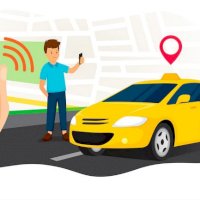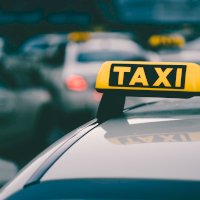Thanks to all the modernization in the transportation sector, people expect near-perfect last-mile deliveries. Most have become quite selective; they choose a delivery that arrives late and won't use the service again. Especially when it comes to ordering items like food or medicine. As long as the delivery arrives on time and the product is in perfect condition, you have a loyal customer.
Another feature users expect is to be kept informed as much as possible. Almost all of us have waited for a delivery and checked the app or website a thousand times a day to see how close it is. Geofences can be useful to address these types of situations; we'll explain how.
How does geofencing technology work?
Geofencing, the technology behind geofences, can help you meet customer needs in the following ways. Geofences create a virtual boundary around a physical location using GPS technology. This can be used to trigger an action, such as sending a notification when a delivery person enters or leaves the area.
If you've ever received a push notification for a coupon or offer from a nearby store, that's geofencing. However, it can be used for more than just location-based marketing. There are many ways geofencing can improve deliveries and take management to the next level.
Facilitate driver management for last-mile deliveries
If your company has a large fleet, you're probably constantly looking for ways to improve. This way, you can make the process easier and more efficient for each driver. Ideally, you should use geofencing, using GPS and radio frequency identification, to trigger notifications when a driver leaves a specific geographic area.
Those in charge of managing last-mile deliveries can use Geofences to track estimated arrival times. This way, you know the exact time they make deliveries and work their shifts. This allows you to optimize routes so deliveries can be made on time. Customers can then be notified of their order's estimated arrival time.
Did it only improve driver efficiency?
Geofencing, while largely focused on fleets and drivers, goes further. It's actually about efficiently managing resources, preventing drivers from wasting extra fuel, keeping productivity under control, fine-tuning time management, and, of course, streamlining base-driver communication.
Estimated delivery times
The ETA, or estimated delivery time, as we mentioned earlier, is vital whether it's a gift of flowers or a pizza. If the company has an app like ToolRides, geofences can be used to send messages or notifications to customers. For example, when the order is ready for delivery, they can also be sent when it's already nearing the customer.
Location data is shared with the company at all times, and a geographic boundary could even be established. This is done to determine when the driver actually arrived, thus preventing them from claiming to be at the base without actually doing so. This type of automation was created to streamline last-mile delivery processes and satisfy customers.
Detailed data collection
If there's one thing that can play an ally in the world of distribution, it's metrics. They're vital for unlocking operational efficiency, which will maximize efficiency levels. However, having access to such data would be pointless if you don't know how to decipher it or process it. Geolocation addresses this, offering in-depth analysis and another perspective.
One of the data points that can be collected is the stop times of each driver. And, if you really examine it closely, it's not difficult to understand why geofences are so widely used. They have become the most current marketing strategy for exploring customer behavior to offer valuable information.
Driver safety
Like any niche market, the delivery business is vulnerable to the possibility of accidents. Especially involving cars, traffic, or the almost unpredictable road conditions. Because of all this, it's essential that keeping drivers safe is a priority for your business. Geofencing helps protect both drivers and vehicles by sending alerts.
These notifications may be because the vehicle has been stolen, needs a tow truck, or if something has happened with the delivery. However, if the driver is on duty and leaves the designated area without warning, a warning will also be issued. Having these notifications active can help resolve the issue immediately and prevent problems from getting worse.
Profitability improvements
Operating costs often vary widely, from the cost of fleet maintenance to the need for planning software. Geofencing improves profitability by helping maintain vehicles. How? By avoiding wear and tear, constant repairs, and saving on fuel costs. Additionally, improper use can be reported to prevent additional losses.
Improved last mile
You're now familiar with the benefits of geofencing and how it works. We'll explain in a simple way why it's useful for optimizing last-mile deliveries. Don't forget to combine it with good route planning software to maximize your business.






